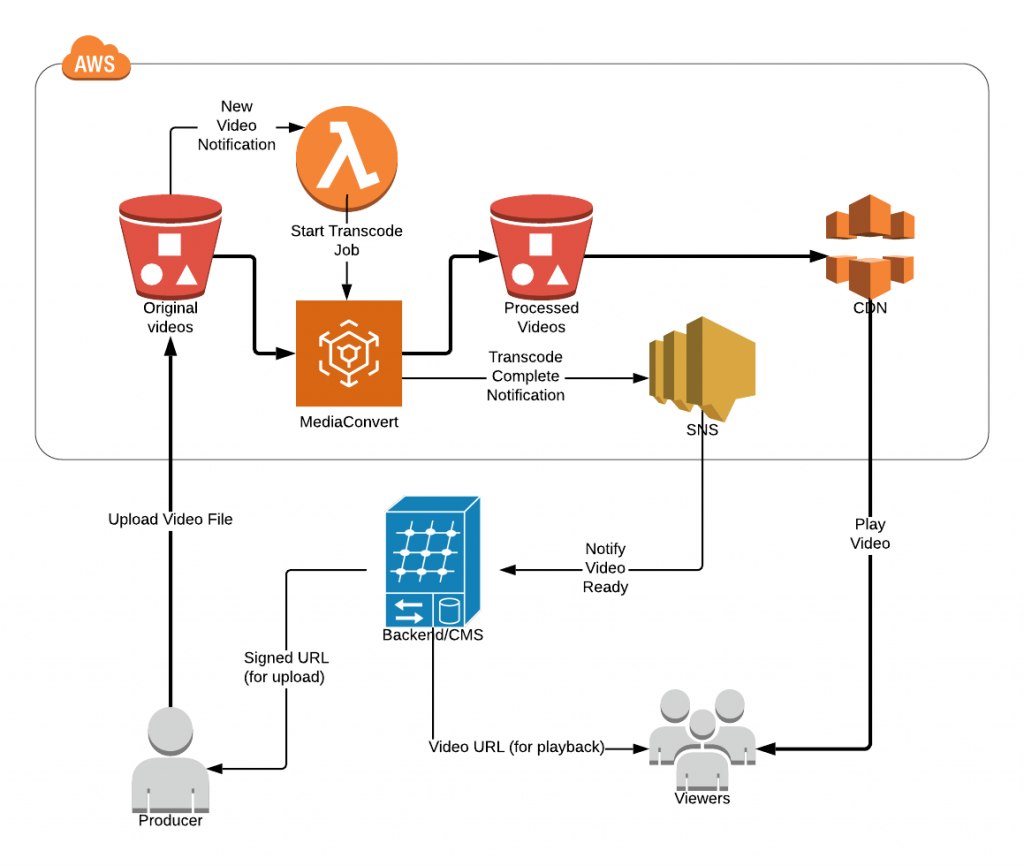I would love to allow my users to upload their own videos to [presumably] AWS S3. As usual on web, we cannot assume much about uploaded videos.
The customer actually came up with the architecture. They just wanted to know if it’s feasible and if it can be done easily.
Sure thing! The diagram hopefully says is all.
Using Presigned URLs is a great way to let your users (or anybody else) securely upload content to your S3, saving you the bother of having to proxy or manipulate large files.
Every video upload triggers a Lambda function, which in turn asks MediaConvert to process that video. It gets transcoded for Adaptive Bitrate and properly packaged for segmented delivery. When ready (or failed) it fires a notification that lets your backend know the video can now be played (or not).
Content is packaged as CMAF, which brings significant savings in transcoding, storage and bandwidth over traditional HLS and DASH, while still compatible with both.
Original videos (the videos that users upload), get archived to low-cost storage. As processed, play-ready copies of these are already in place, you may never need the originals again, yet you don’t really want to throw them away. Just in case…
Complete solution, less the URL signing, is available for grabs here. You should be able to set it up and transcode a few short videos in less than 20min.
Does is scale?
Oh yes! There’s virtually no bottleneck in the whole AWS-driven part of the architecture. As long as you can keep up with the requests for signed URLs and the SNS notifications, sky’s truly the limit.
Is it expensive?
It depends. 🙂
Transcoding alone will set you back some $7 for every hour of content. Yet the default preset being used is overkill (10 quality variants), you can easily duplicate and customize it to proportionally cut costs. You can save even more with reserved pricing for MediaConvert once your portal reaches a steady flow of uploads.
You’ll also be paying for storage, CDN, S3 and internal traffic. Finally, pennies or nothing for traffic, Lambda and notifications.
Is it worth it over other solutions?
There’s no doing better if you need it scalable and easily deployed. It’s also maintenance free, which many tend to disregard when factoring in alternatives.
Hot topic here is transcoding, and there are many different approaches to it, with pros and cons to each. Factor in volume, size, and fluctuations of video uploads, required readiness (how soon after upload you need a video to be available, at minimum), SaaS vs cloud vs on premises, development and testing capabilities etc.

